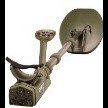Tesoro Lobo Super-trac Alignment Procedure?
-
Similar Content
-
- 5 replies
- 651 views
-
- 2 replies
- 5,795 views
-
- 46 replies
- 13,977 views
-
- 3 replies
- 2,401 views
-
- 2 replies
- 2,959 views
-
- 11 replies
- 2,768 views
-
-










Recommended Posts
Create an account or sign in to comment
You need to be a member in order to leave a comment
Create an account
Sign up for a new account in our community. It's easy!
Register a new accountSign in
Already have an account? Sign in here.
Sign In Now